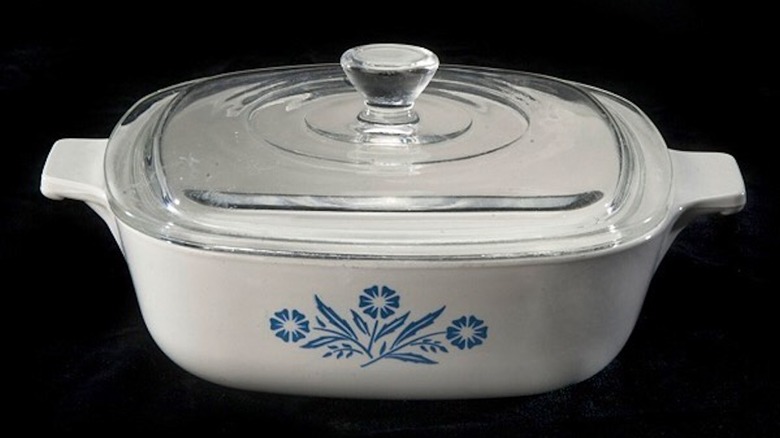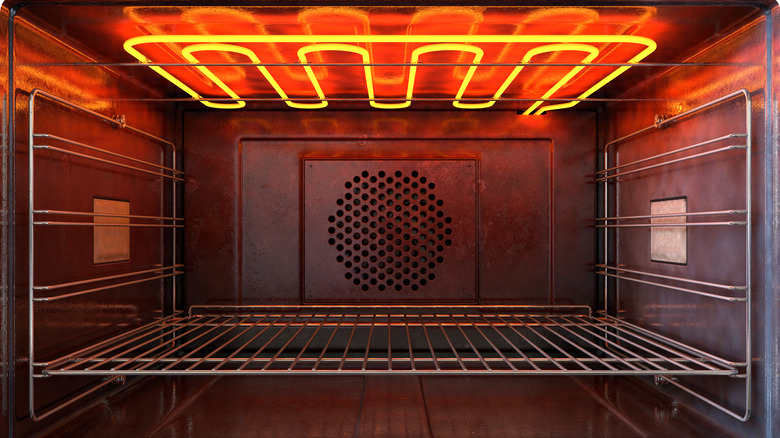The Oven Accident That Lead To The Invention Of CorningWare
They say that necessity is the mother of invention, and there is certainly some truth to that statement. However, there are also times when accidents play a significant role. Look at penicillin, which was discovered by accident when Dr. Alexander Fleming returned from summer vacation to find mold contaminating his petri dishes, per PBS. There are also plenty of examples of accidental inventions in the culinary world. Take Corn Flakes for instance. In the 1890s, Dr. John Kellogg and his brother Will accidentally left wheatberry cooking in the kitchen, causing the kernels to flake, which later became the popular breakfast cereal when they repeated the experiment with corn instead (via Reader's Digest). Other examples of accidental food inventions include popsicles, ice cream cones, and potato chips, according to the NY Daily News.
While some accidental inventions changed what we ate and how we ate them, others had an effect on how we prepared and cooked our food. The microwave is one such example, discovered by accident in 1946 by Raytheon engineer Percy Spencer, when he noticed that his chocolate bar had melted while testing a magnetron, recounts Popular Mechanics. Another example? CorningWare.
The accident that created a popular kitchenware
In 1952, Dr. S. Donald Stookey was heating up a piece of photosensitive glass in the Corning lab, but instead of heating it to 600 C, he accidentally heated it to 900 C, reports Chemical & Engineering News. When Dr. Stookey opened the oven, he expected a big mess, but instead discovered that the glass was "still in perfect shape, milky white from the crystallization" and "doesn't break when dropped," as noted by the Corning website. A new glass-ceramic material had been discovered, which Corning named CorningWare.
Corning already offered Pyrex as part of its line of kitchenware, which it released in 1915. However, as Chemical & Engineering News explained, CorningWare was "even more durable than Pyrex" and "gave home cooks the ability to bake, serve, and refrigerate foods in the same dish." As Taste of Home explains, the first CorningWare products featured a blue "cornflower" design, which then became Corning's trademark product for three decades. Today, the original CorningWare products are sought after by collectors, who may or may not appreciate the item's accidental history.

